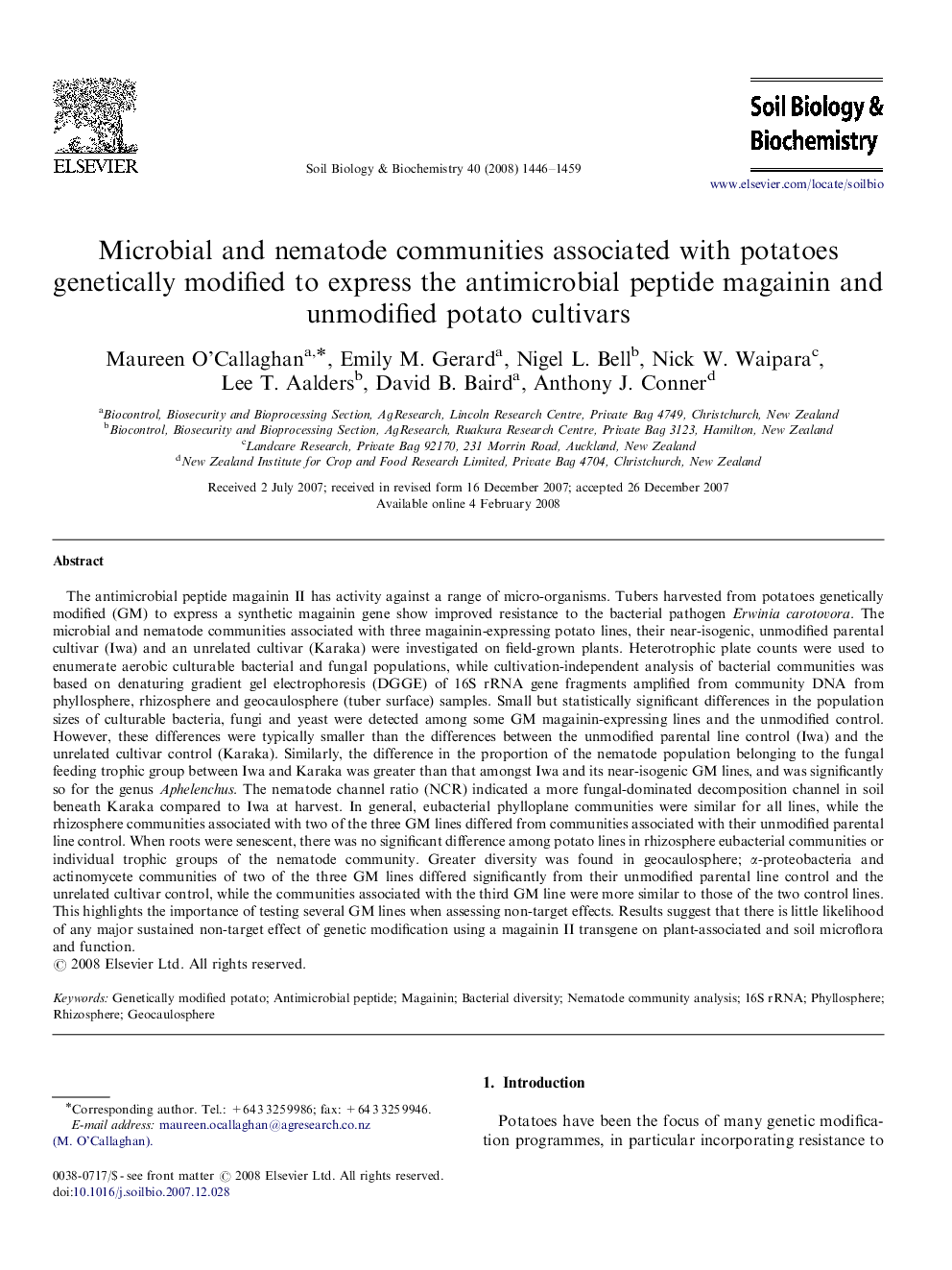| Article ID | Journal | Published Year | Pages | File Type |
|---|---|---|---|---|
| 2026951 | Soil Biology and Biochemistry | 2008 | 14 Pages |
The antimicrobial peptide magainin II has activity against a range of micro-organisms. Tubers harvested from potatoes genetically modified (GM) to express a synthetic magainin gene show improved resistance to the bacterial pathogen Erwinia carotovora. The microbial and nematode communities associated with three magainin-expressing potato lines, their near-isogenic, unmodified parental cultivar (Iwa) and an unrelated cultivar (Karaka) were investigated on field-grown plants. Heterotrophic plate counts were used to enumerate aerobic culturable bacterial and fungal populations, while cultivation-independent analysis of bacterial communities was based on denaturing gradient gel electrophoresis (DGGE) of 16S rRNA gene fragments amplified from community DNA from phyllosphere, rhizosphere and geocaulosphere (tuber surface) samples. Small but statistically significant differences in the population sizes of culturable bacteria, fungi and yeast were detected among some GM magainin-expressing lines and the unmodified control. However, these differences were typically smaller than the differences between the unmodified parental line control (Iwa) and the unrelated cultivar control (Karaka). Similarly, the difference in the proportion of the nematode population belonging to the fungal feeding trophic group between Iwa and Karaka was greater than that amongst Iwa and its near-isogenic GM lines, and was significantly so for the genus Aphelenchus. The nematode channel ratio (NCR) indicated a more fungal-dominated decomposition channel in soil beneath Karaka compared to Iwa at harvest. In general, eubacterial phylloplane communities were similar for all lines, while the rhizosphere communities associated with two of the three GM lines differed from communities associated with their unmodified parental line control. When roots were senescent, there was no significant difference among potato lines in rhizosphere eubacterial communities or individual trophic groups of the nematode community. Greater diversity was found in geocaulosphere; α-proteobacteria and actinomycete communities of two of the three GM lines differed significantly from their unmodified parental line control and the unrelated cultivar control, while the communities associated with the third GM line were more similar to those of the two control lines. This highlights the importance of testing several GM lines when assessing non-target effects. Results suggest that there is little likelihood of any major sustained non-target effect of genetic modification using a magainin II transgene on plant-associated and soil microflora and function.
